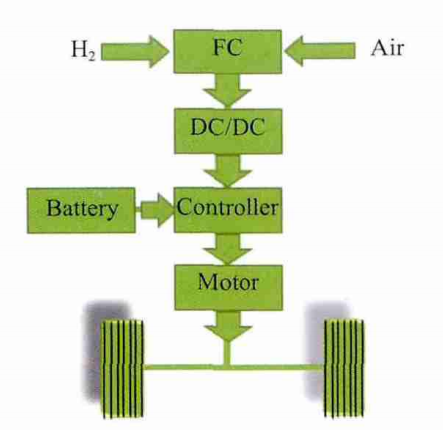What Are You Looking For?
Hydrogen Fuel Cells and Hydrogen Energy Storage
Introduction
With the increasing attention to energy issues worldwide, new energy battery technologies have gradually become the top priority of scientific research and industrial development in various countries under the background of energy transition and sustainable development. From traditional lithium-ion batteries to more forward-looking hydrogen fuel cells, liquid flow batteries, etc., different types of batteries have shown a wide range of application prospects in the fields of power storage and electric vehicles. However, there are also many challenges and limitations, such as energy density, cycle life, and cost. To better promote the development of new energy sources, this series will comprehensively evaluate the advantages, drawbacks, and application scenarios of each type of mainstream new battery technology, provide valuable references and guidance for researchers, industrial practitioners, promote continuous innovation in this field, and contribute to the sustainable development of global energy.
Main article
According to the electrolyte, fuel cells are classified and characterized as shown in Table 2-1.
Table 2-1 Basic types of fuel cells
|
Fuel cell type |
Alkaline Fuel Cell AFC |
Molten Carbonate Fuel Cell MCFC |
Acid Fuel Cell PAFC |
Solid Oxide Fuel Cell SOFC |
Proton Exchange Membrane Fuel Cell PEMFC |
|
Electrolyte |
Alkaline electrolyte |
Molten carbonate |
Phosphoric acid |
Solid oxides |
Polymers |
|
specific power |
35-105 |
30-40 |
120-180 |
15-20 |
340-800 |
|
Fuel type |
Hydrogen
|
Natural gas, liquefied petroleum gas |
Natural gas, methanol LPG |
H、CO、HC |
Hydrogen
|
|
activation time |
few minutes |
>10min |
few minutes |
>10min |
<5s |
|
catalyzer |
Nickel/Silver |
Nickel |
platinum |
Lanthanum manganate |
platinum |
|
Key Advantages |
Fastest start-up/low operating temperature |
High energy efficiency |
Insensitive to CO2 |
High energy efficiency |
Fastest startup/low operating temperature |
|
Main disadvantages |
Requires pure oxygen as catalyst |
High operating temperature |
Sensitive to CO / slow startup |
High energy efficiency Fastest |
startup/low operating temperature |
|
Areas of Application |
Aerospace
|
Power Stations |
Power Stations |
Large Power Stations |
Trams/Aerospace/Portable Energy |
Hydrogen fuel cells work by reacting hydrogen and oxygen without combustion to convert hydrogen energy into electricity. The reaction process is shown in Figure 2.1 [1].

Figure 2.2 Fuel Cell Vehicle Power Chain Portfolio
In order to realize zero-carbon and zero-pollution ships, a variety of zero-carbon ship power technology routes have emerged. Hydrogen aviation is also considered to be the key to achieve zero pollutant emissions and sustainable development in the aviation industry in the future. Due to the high requirements of large passenger aircraft for hydrogen fuel cell energy density, hydrogen fuel storage and refueling, and hydrogen safety, it is difficult to realize the application of large hydrogen fuel cell aircraft in a short time. Drones are becoming more and more widespread in the industry chain due to their economic and convenient operation characteristics.
In the long term, hydrogen energy is expected to become an important form of electricity storage. From the stock of installed capacity, pumped storage is still the main form of energy storage, in recent years, electrochemical energy storage has also begun to accelerate the development of hydrogen energy storage , but it has not yet realized the application of large-scale. However, as mentioned earlier, whether in the time dimension or space dimension, the future application of energy storage in the power system will be more abundant, the form of energy storage will be more diversified, hydrogen energy can still be used as chemical energy storage, physical energy storage, a promising supplement.
According to IEA's forecast, the installed capacity of electrochemical energy storage/hydrogen energy will reach 9%/6% respectively in 2050. From the perspective of industrialization, electrochemical energy storage has a strong industrial foundation and will be the first to usher in large-scale development, while hydrogen energy storage is still in the early stage of industrialization, and the progress of large-scale development will be slower than that of electrochemical energy storage.
At present, the mainstream electrolytic water hydrogen technology mainly adopts the proton exchange membrane water electrolysis (PEM) method, and the unit investment of its complete hydrogen energy storage system is about¥9000/kW. As a comparison, the current system cost of an electrochemical energy storage system (LiFePO4) is about¥4800/kW (¥1.2 /wh system cost, 4h backup time), and there is still a clear advantage over the hydrogen energy storage system in the cost end; currently, the most widely used pumped storage system in China has a strong industrial foundation, and will be the first to usher in the scale development, while the progress of large-scale development will be slower than electrochemical energy storage. At present, the cost of the most widely used pumped storage system in China is about RMB 7000/kW, which is also better than that of hydrogen storage systems.
However, with the rapid development of wind power and photovoltaic industry, the degree of redundancy of the installed capacity will be significantly increased, the grid to ensure the stability of the power grid certainly can not be a short period of time to absorb the excess power impact, so wind power and photovoltaic low-cost power abandonment will become an important source of hydrogen electrolysis power, and to solve the current dilemma of the industrialization of hydrogen energy storage.
References:
[1]卢国强.氢燃料电池结构原理及其发展现状[J].内燃机与配件,2023(15):106-108.DOI:10.19475/j.cnki.issn1674-957x.2023.15.007.
[2]侯明,衣宝廉.燃料电池技术发展现状[J].电源技术,2008(10):649-654.
[3]邵志刚,衣宝廉.氢能与燃料电池发展现状及展望[J].中国科学院院刊,2019,34(04):469-477.DOI:10.16418/j.issn.1000-3045.2019.04.012.